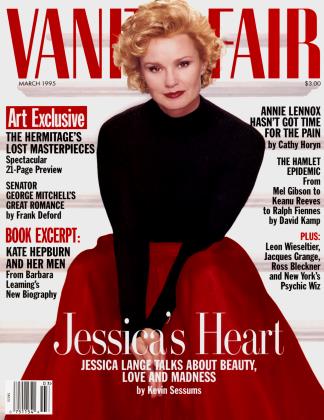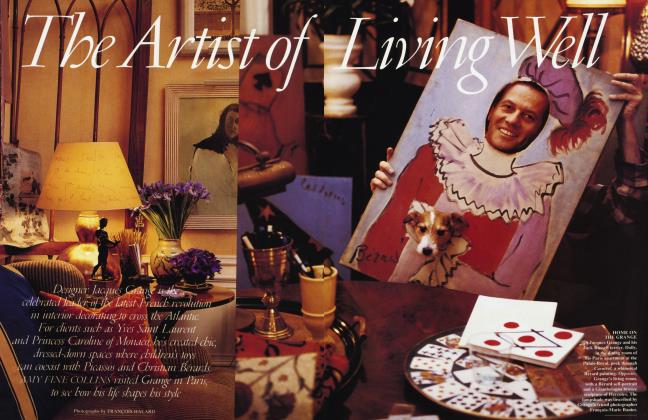Sign In to Your Account
Subscribers have complete access to the archive.
Sign In Not a Subscriber?Join NowPure Crewdson
A photographer and the thrill of the haunt
Picture this: a trio of birds standing at the edge of a circle of eggs, dozens of butterflies clinging to long braids of human hair hanging in the forest like vines, an excessively floral altar to two dead birds built deep in the woods with blue Christmastree lights and a squirrel bearing witness. Heir to Hitchcock, David Cronenberg, and Raymond Carver, 32-year-old photographer Gregory Crewdson spends weeks at a time holed up in his Brooklyn studio obsessively building the highly detailed psycho-dioramas that are the set pieces for his photographs—realer-than-real landscapes, paranormal scenarios where the natural world collides with the facade of family life and, with a nearly hallucinogenic burst of color, blooms into an uncanny vision of the familiar gone awry.
Crewdson, who teaches at Yale and is a contributing editor at the photography magazine Blind Spot, has recently completed a stunning new body of work which will be seen this month in three simultaneous solo shows: at Luhring Augustine in New York, Ruth Bloom in Santa Monica, and London's hottest gallery, Jay Jopling's White Cube. "My photographs can be disturbing and horrific," he explains, "but it is equally important to me to make the most beautiful photograph I can." His poetic view evokes the melancholy and macabre sensations of the tainted Technicolor and proudly plastic moments that define his generation, expanding on the uniquely suburban American mythology of home and family—an especially interesting view given that he has never lived in the suburbs. "Since I am alienated from that landscape, I view it with a certain amount of awe," he observes.
The amount of man-made material used to create his seemingly natural settings is significant. Crewdson's 20-by-20-by-10-feet dioramas are laboriously crafted, with houses made from foam, papier-mache mountains, trees turned from twigs and dried flowers, and animals that range from abandoned examples of taxidermy found at flea markets to hundreds of live worms FedEx'd in by an Ohio company. "I see myself as working within the tradition of photographers interested in reinventing the American landscape—Walker Evans, William Eggleston, and so on," he says. "It is my desire to build a world as highly detailed as possible, combining nature and artifice into a believable fiction."
A. M. HOMES
 View Full Issue
View Full Issue


















Subscribers have complete access to the archive.
Sign In Not a Subscriber?Join Now